Whether you’re a seasoned soccer player or just starting your journey on the pitch, the importance of properly breaking in your soccer cleats cannot be underestimated.
The right pair of cleats can enhance your performance, improve your comfort, and help you unleash your full potential on the field.
However, new cleats often come with a stiff and unforgiving feel, causing discomfort and even blisters during those crucial early matches.
In this article, we’ll delve into the art of breaking in soccer cleats, providing you with valuable tips and techniques to ensure a seamless transition from box-fresh stiffness to personalized perfection.
- Procedure to break in your soccer cleats effectively
- Step 1 – Get the right size of cleats
- Step 2 – Wear a pair of soccer socks
- Step 3 – Use soccer cleat insoles
- Step 4 – Take a walk to gently ease into wearing them
- Step 5 – Use lubricant or petroleum jelly to ease friction
- Step 6 – Stretch out the cleat upper with a shoehorn or newspaper
- Step 7 – Wear your cleats for three consecutive days
- What is the fastest way to break in soccer cleats?
- How do you break in soccer cleats without getting blisters?
- Can you break in soccer cleats without wearing them?
- Concluding thoughts
Procedure to break in your soccer cleats effectively
The sequence of steps outlined below should set you on the path to optimal comfort when you wear your soccer cleats for training sessions or competitive matches.
First up is…
Step 1 – Get the right size of cleats
Selecting the appropriate cleats that fit your feet properly is the first step towards a successful break-in process.
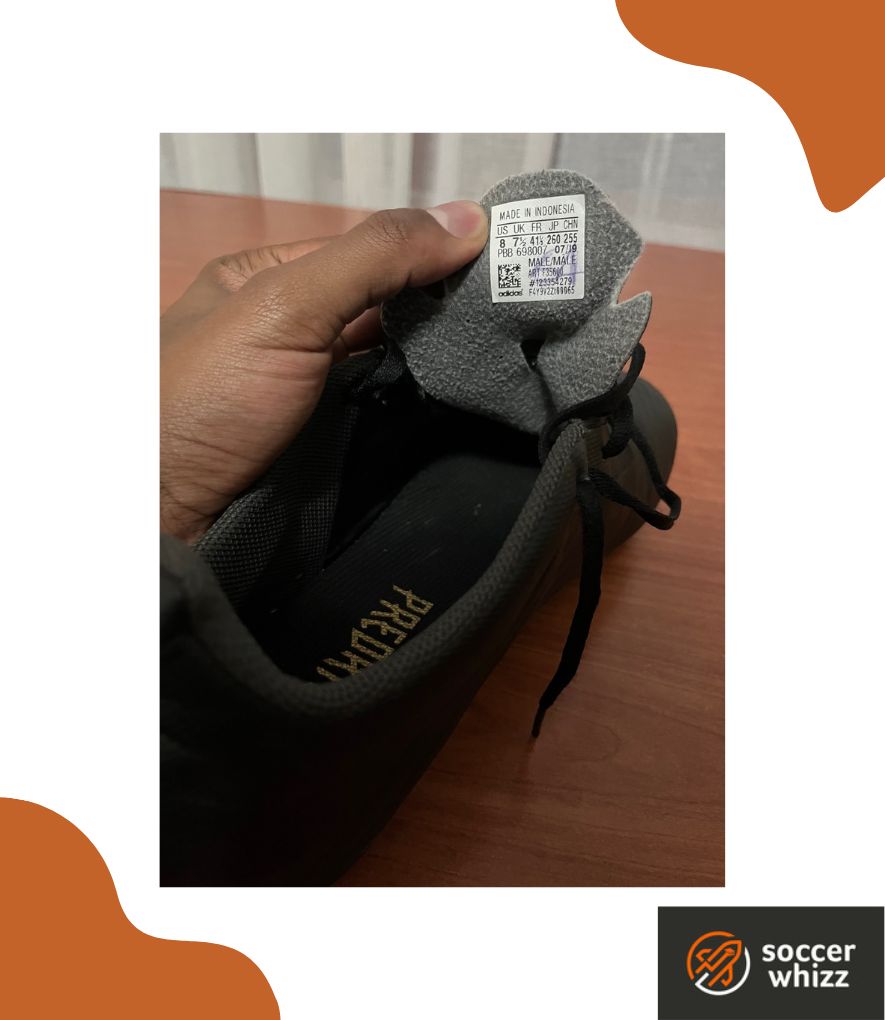
Ensure that the cleats provide a snug but not overly tight fit that gives you just enough leg room to wiggle your toes in the front.
Look for a size that allows a small amount of space between your longest toe and the front of the cleat.
Step 2 – Wear a pair of soccer socks
When wearing your cleats, opt for thick, moisture-wicking soccer socks.
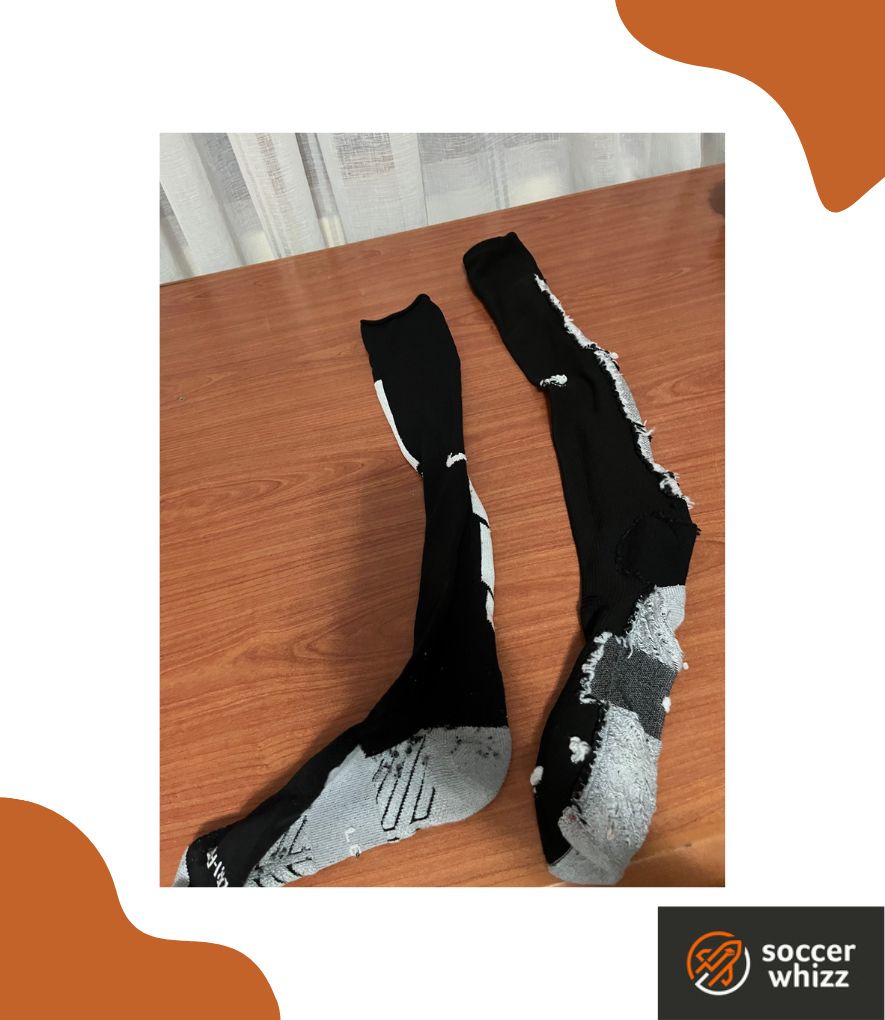
These socks not only provide additional cushioning but also create a slight barrier between your feet and the cleat material.
This can help reduce friction and prevent blisters during the break-in phase.
Step 3 – Use soccer cleat insoles
Another effective method to expedite the break-in phase of soccer cleats is through the use of custom insoles.
These specialized inserts provide immediate comfort and targeted support in crucial areas, namely the heel and arch.
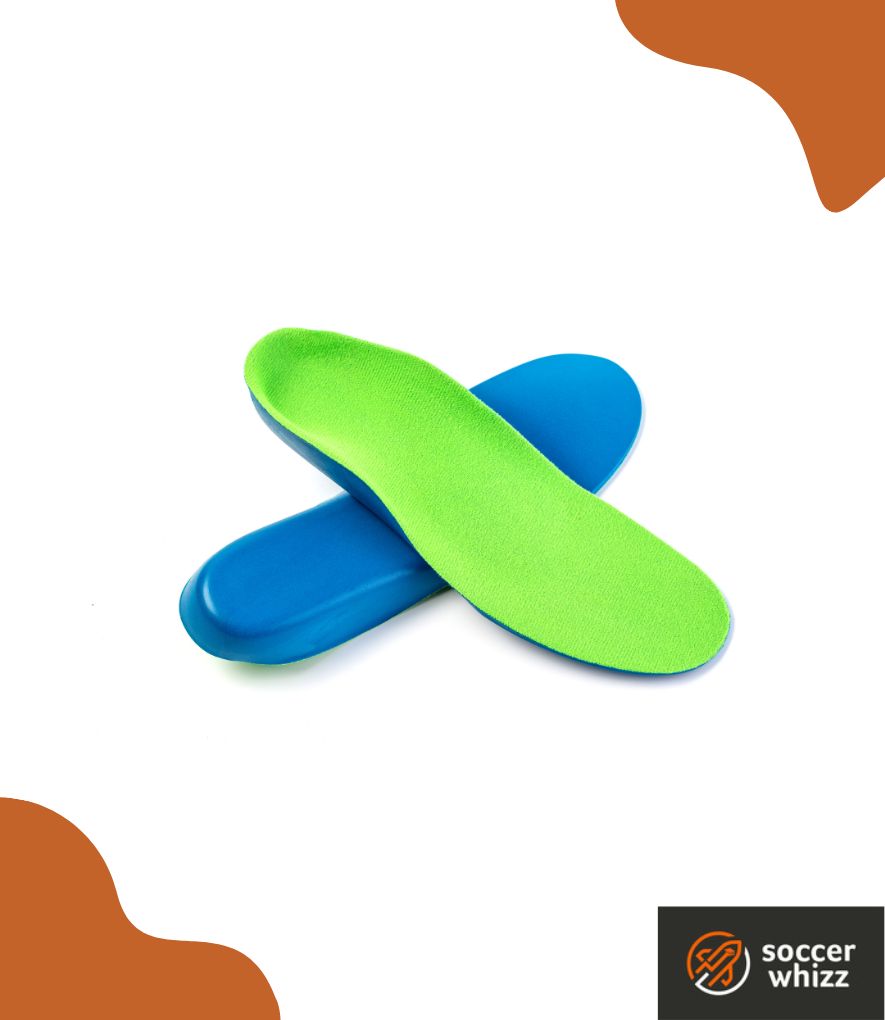
By incorporating built-in arch supports, they effectively prevent strain and excessive collapsing, which are common challenges when wearing new footwear.
Additionally, the inclusion of heel cups allows for a snug fit and helps alleviate the discomfort caused by rigid cleat soles.
As the sole of the cleat plays a vital role in the break-in process, utilizing custom insoles significantly speeds up the overall adjustment period.
Most importantly however, soccer cleat insoles reduce your overall exposure to foot injuries like Achilles tendinitis and plantar fasciitis.
Step 4 – Take a walk to gently ease into wearing them
Before taking your new cleats to the field, start by wearing them around the house for short periods.
This helps to gradually familiarize your feet with the cleats and begins the process of stretching and molding the materials.
Walk, jog, and perform light movements to simulate the motions you’ll experience during a soccer game.
Step 5 – Use lubricant or petroleum jelly to ease friction
Wearing inflexible and rigid shoes often leads to friction between the materials and your feet, resulting in painful blisters and chafing.
A common technique employed by professional players when quickly breaking in new cleats is applying a thin layer of petroleum jelly – such as Vaseline – to the inner surface of the cleats.
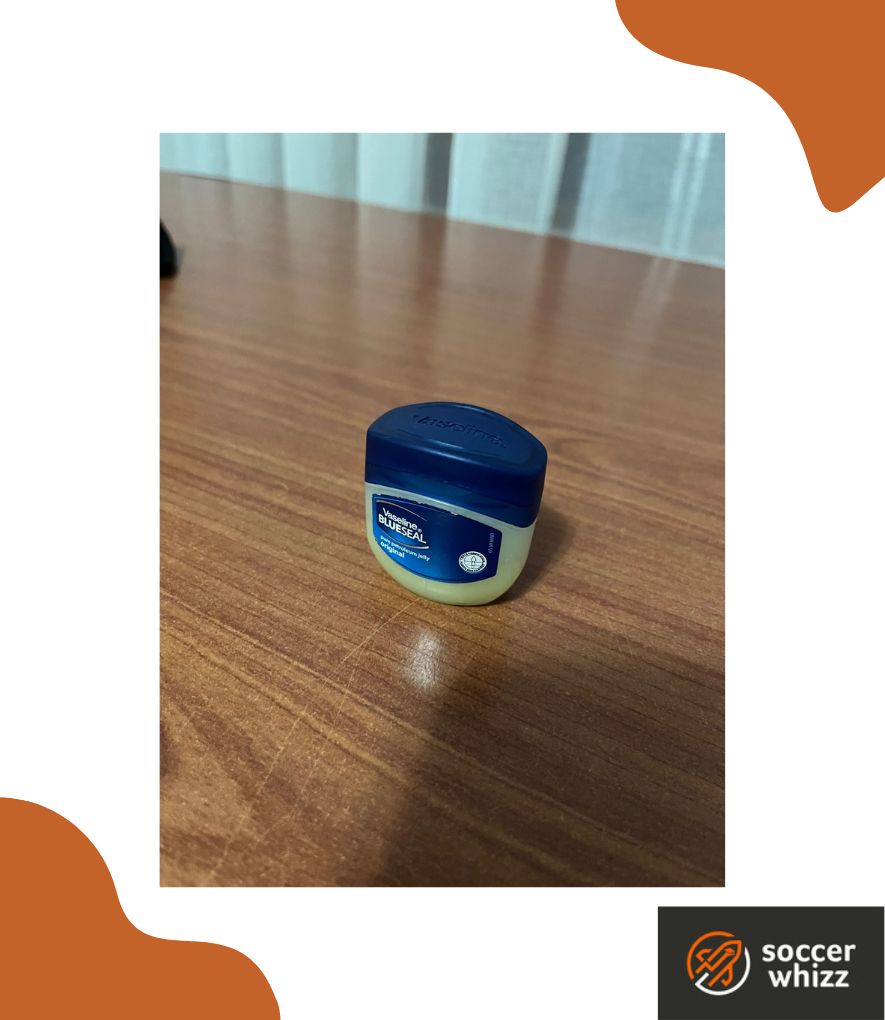
Petroleum jelly possesses a slippery texture that minimizes the occurrence of dry rubbing that triggers blisters.
Moreover, it aids in softening the materials commonly used, such as polymers and leather, in cleat construction.
By utilizing this method, you can safeguard your feet against discomfort and expedite the break-in process with greater ease.
Step 6 – Stretch out the cleat upper with a shoehorn or newspaper
If you’re experiencing discomfort during your training sessions, it might be necessary to further loosen the upper material of your cleats.
For a more precise adjustment, you can insert a shoehorn into the boot’s cavity to gently expand the specific area.
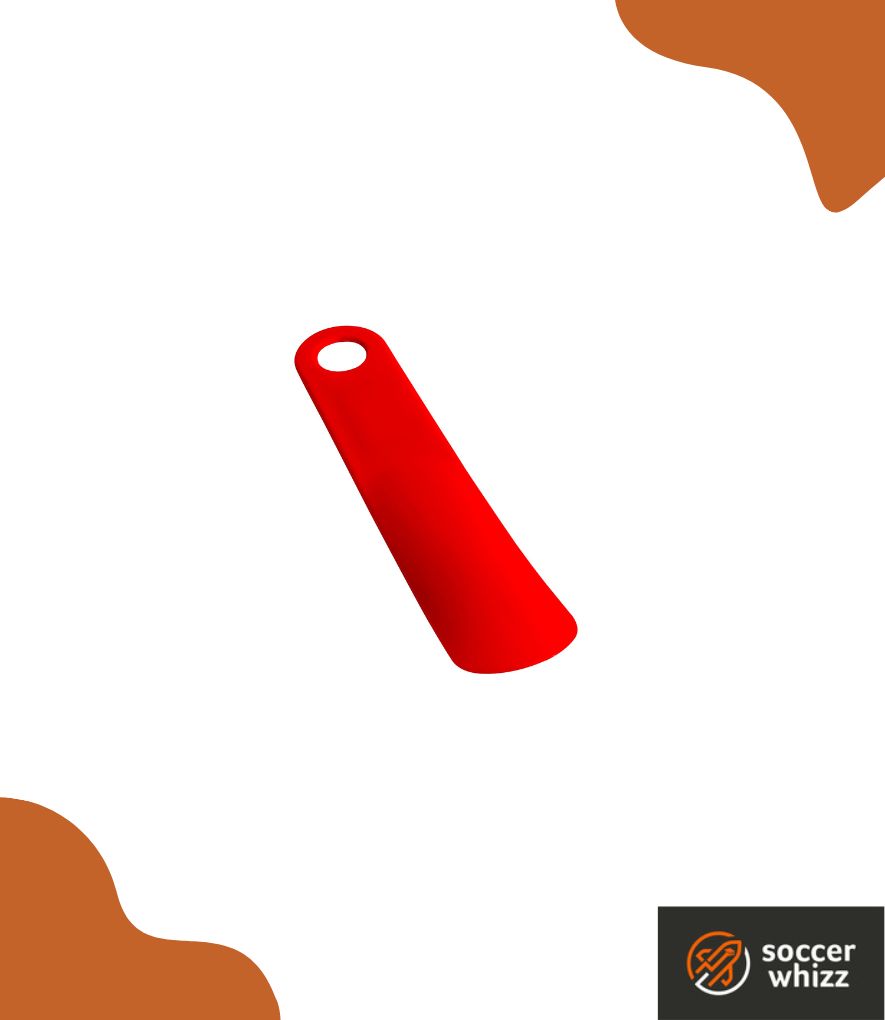
The shape of the shoehorn will exert pressure on the upper, aiding in stretching the material around it.
Similarly, rolling up newspaper and inserting it into the cleat’s upper can also be effective.
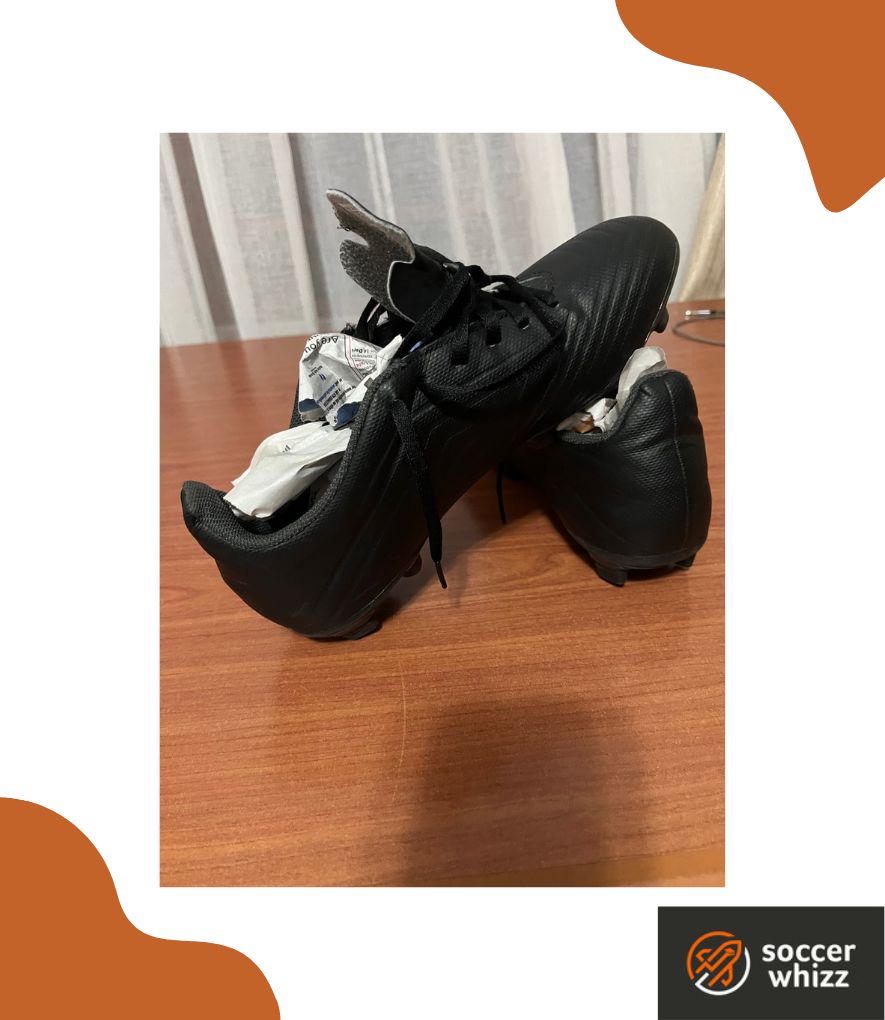
However, it’s important to exercise caution and ensure that the newspaper is positioned correctly to avoid any uneven bumps that may compromise the feel of the upper material.
Paying attention to these details will contribute to a more comfortable fit and improved performance.
Step 7 – Wear your cleats for three consecutive days
With time and consistent use, your cleats will gradually mold to your feet, providing the perfect balance of comfort and performance.
What is the fastest way to break in soccer cleats?
The fastest way to break in soccer cleats is by using a combination of techniques to speed up the process.
Here are some methods to hasten the break-in period:
Wear them around the house
Put on your cleats and wear them indoors for short periods.
This allows your feet to gradually adapt to the cleat’s fit and helps soften the materials.
Use moisture
Apply a small amount of water or moisture to areas that feel tight or uncomfortable.
Dampen a cloth or use a spray bottle to moisten specific spots, such as the vamp or collar.
This can help soften the material and make it more pliable.
Heat and stretch
Utilize heat to soften the cleat’s material.
Use a hairdryer on low or medium heat to warm up the tight areas.
While the material is warm, flex and bend the cleats using your hands or wear them with thick socks to help stretch and shape them to your feet.
How do you break in soccer cleats without getting blisters?
Breaking in soccer cleats without getting blisters requires a combination of proper preparation and techniques to minimize friction.
The first way in which you can achieve that is by wearing good quality socks.
Opt for moisture-wicking soccer socks made of synthetic materials or specialized sports socks.
You’ll definitely want to avoid cotton socks as they can retain moisture and increase friction; ultimately leading to blisters.
Secondly, reduce possible friction between your feet and the cleats you’re wearing by applying a thin layer of petroleum jelly or specialized anti-friction balms to areas prone to blistering.
These lubricants create a barrier between your skin and the cleat, minimizing friction and reducing the chances of developing blisters.
Lastly, you should consider purchasing blister prevention patches.
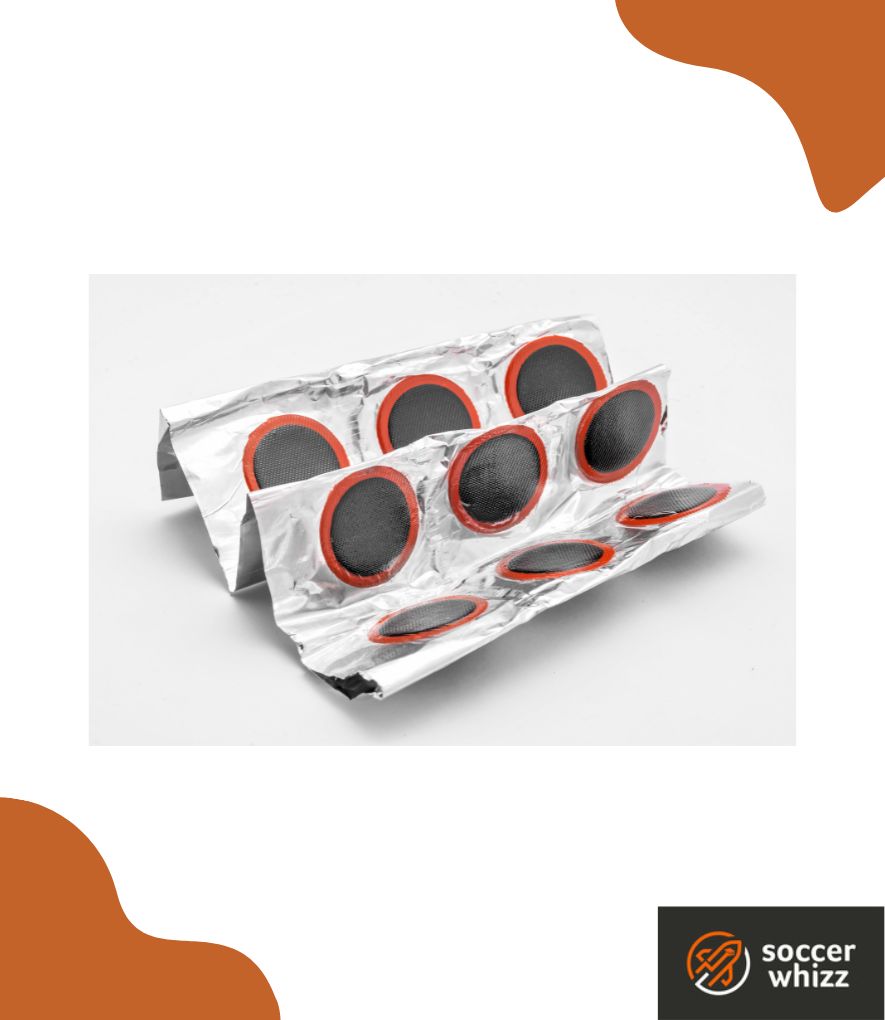
More specifically, use adhesive blister prevention patches or moleskin on areas prone to this sort of skin discomfort.
This type of patch provides extra cushioning and protection, thereby reducing friction and potential blister development.
Can you break in soccer cleats without wearing them?
Breaking in soccer cleats without wearing them can be challenging, as the process relies on the interaction between your feet and the cleat materials.
However, using techniques such as adding moisture and heating the cleat could gently flex the materials and still produce the desired effect.
Concluding thoughts
Breaking in soccer cleats is a crucial step towards achieving optimal performance and comfort on the field.
Throughout this comprehensive article, we have explored various techniques and strategies to expedite the break-in process effectively.
Remember, breaking in soccer cleats is not a one-size-fits-all process.
Each player’s experience may vary and it’s important to find out what’s best for you.
With that said, here’s a video which summarizes the overall soccer cleat break in process:
For more content on soccer cleats, you can definitely check out the articles linked down below:
- How soccer cleats are supposed to fit;
- Drying soccer cleats in 5 easy steps; and
- The process for cleaning soccer cleats from start to finish
If you enjoy the content that I create and would like to buy me a coffee, then I’d really appreciate it!
Any money that I earn through this donation will be re-invested into more content for this website.
Additionally, by sending in a donation you’ll also receive a copy of my recently released 190+ page eBook on Soccer Ball Care, as well as be subscribed to our mailing list where you’ll be regularly informed on the latest developments concerning the Soccer Whizz blog.
- Future Icons: Europe’s Emerging Midfield Maestros Set for Glory - December 4, 2023
- Kickstarting a Revolution: How Soccer Transformed the United States Over the Last Four Years - October 7, 2023
- 4-1-4-1 Soccer Formation [Analysis] - September 23, 2023

